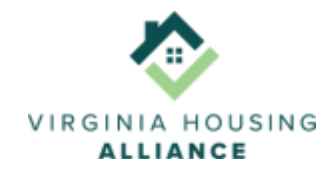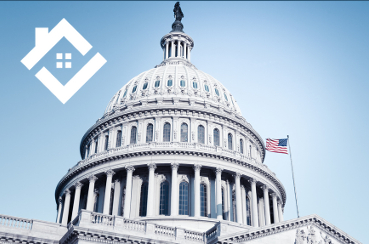EXECUTIVE ORDERS PROJECT: Bureaucracy - Cuts to Federal Housing Funds Are on the Horizon ...
... and Virginia's heavy reliance on these dollars mean the state may be in for rough waters in the months ahead.
By Martin Davis
EDITOR-IN-CHIEF
Email Martin

That Virginia has a housing crisis is well-known; that Virginia depends heavily upon the federal government to address those needs is less-well known.
Helping people understand both the extent of the housing crisis, and the concerns surrounding the federal dollars supporting efforts to address that issue are at the core of the Virginia Housing Alliance’s mission.
A recent infographic the organization released, the 2025 Virginia Housing Landscape (download below), provides some perspective on the depth of the issue.
Highlights include:
Virginia has an estimated shortage of 300,000 affordable rental homes.
The inventory of starter homes has decreased in all parts of VA, except the
Southwest, since 2013.
1 in 7 Virginia households are severely cost burdened, which means
they spend over 50% of their income on housing costs.
7,141 total people experiencing homelessness, based on 2024 Point in Time (PIT) counts.
19,475 Homeless youth enrolled in public schools in 2022-23 academic year, based on the McKinney-Vento definition of homelessness.
A Disproportionate Share
Addressing this issue is not cheap. And Virginia leans heavily on the federal government for that support.
“If you look at all funding Virginia has for housing related initiatives,” Isable McLain of the Virginia Housing Alliance told the Advance in a phone call, the “state supports about 10%, and the federal funds account for 90%.”
That disparity is concerning given that the federal government is now looking at ways to significantly reduce outlays at the Housing and Urban Development (HUD) department, which controls many of the programs that benefit Virginians. In the administration’s crosshairs are significant cuts and changes to how housing support is handled.
For now, the greatest issue is uncertainty over what might happen. “There have been freezes and claw backs related to [the monies that address housing from the] Energy [Department] and FEMA,” McLain said, but final decisions as to how the government will cut or restructure fund for housing support remains an unknown.
Understanding the Impact
While we can’t know at the moment what will be cut, understanding current funding streams helps to put a fine point on the numbers of people who stand to be hurt in Virginia if federal housing support were to be greatly reduced.
To help communities understand what’s potentially at stake, the Virginia Housing Alliance in March released a one-page document — “Federal Funding for Housing in Va” (download available below) — that gave some of the high-level details regarding federal dollars dedicated to housing, and the agencies they come from.
Highlights of the report include the following distributions to Virginia:
FY 2024 - $554,747,735 for Housing Choice Voucher Program (HUD) - Helps low-income families, veterans, the elderly, and the disabled live in decent and safe housing in the private market without paying more than 30% of their income.
FY 2024 - $25,182,495 for Low-Income Housing Tax Credit (Treasury) - Incentivizes private investment in the development of affordable housing through tax credits. In VA, LIHTC supports the creation/preservation of ~5,500 units/year.
FY 2023 - $618,543,230 for Public Housing (HUD) - Provides single-family rental homes and apartment units to low-income families (up to 80% AMI). HUD owns the housing while public housing authorities operate it.
FY 2023 - $308,665,156 for Project Based Rental Assistance (HUD) - Provides private owners of multifamily housing either a long-term rental assistance contract, a subsidized mortgage, or both in order to make units affordable. Project-based assistance is fixed to a property.
These top-line numbers touch a lot of Virginians’ lives. According to the sheet, there are 194,664 affordable homes for Virginians directly supported by HUD; 50,762 households that receive Housing Choice Vouchers (rental assistance); 274,000 single-family homes and apartments supported by Federal Housing Administration (FHA) mortgage insurance products; and 5,800+ Virginians who receive housing and support in HUD-funded shelters.”
How much money stands to be lost — and subsequently, how many lives may be affected — is unknown at the moment. But McLain points out that there are some worrying signs.
In particular, she’s concerned about “the CDFI — Community Development Financial Institution fund.” This innovative program provides “tailored resources and innovative programs that invest federal dollars alongside private sector capital … [to serve] mission-driven financial institutions that take a market-based approach to supporting economically disadvantaged communities,” according to its website.
A March 14 Executive Order focusing on reducing the federal bureaucracy threatened CDFI’s existence.
“It seems that the threat has passed for now,” McLain said, “but there is still remaining uncertainty for the future.”
Local Anxiety
It’s this level of uncertainty that is worrying local organizations.
Currently, the George Washington Regional Commission has not experienced a reduction in funds, according to executive director Chip Boyles. The uncertainty, however, is there.
Boyles tells the Advance that even if all funds the GWRC is planning on for the year ahead were to stay in place, the organization needs to “be prepared for delays in distribution.”
That’s the word he is hearing from other government agencies, who are seeing distributions slow as staffing cuts across the federal government take hold.
For Boyles, that means cashflow could be the major concern in the coming year. Typically, organizations can draw down awarded funds on regular schedules. Delays mean that organizations like GWRC may have to carry those costs longer if disbursements slow.
Across the commonwealth, there are more than 7,100 people who are unhoused. The worries over cuts also concern McLain about how they’ll be affected.
In 2024, Virginia received $47,262,693 in federal funds to support the Continuum of Care, a federally mandate “local planning body that coordinates housing and services for homeless families and individuals,” according to the local CoC website.
While currently the administration has not taken away funds, McLain is worried because “they still haven’t received their grant agreements.” A situation she describes as “most concerning.”
Currently, it is difficult to track the impact of federal dollars at the local level, but VHA is working to address that.
The Virginia Housing Alliance is in the process of preparing a dashboard, however, that will soon make it possible for people to easily find not just total federal dollars that flow to the state, but to see how those dollars flow down to localities.
The State May Have to Step Up
Right now, McLain is focused on helping organizations prepare for staffing cuts and developing strategies to defend housing funding in the next budget cycle.
To address the needs before Virginia, McLain says, will require “significantly more investment than we see now. “
She estimates that for fiscal year 2025, Virginia gave just 0.76% of general funds toward housing.
Despite the heavy reliance on federal funds, and Virginia’s limited support from general funds, McLain finds reason for optimism.
“This work is so incredibly important that people will do it regardless of the storm that might be coming in,” she said. “There has been a general shift in recognizing how important housing is and that we are facing a crisis. And more people are talking about it, which gives me hope. We just haven’t quite connected it.”
At the end of the day, she says, “Everyone deserves a safe place to call home.”
Local Obituaries
To view local obituaries or to send a note to family and loved ones, please visit the link that follows.
Support Award-winning, Locally Focused Journalism
The FXBG Advance cuts through the talking points to deliver both incisive and informative news about the issues, people, and organizations that daily affect your life. And we do it in a multi-partisan format that has no equal in this region. Over the past year, our reporting was:
First to break the story of Stafford Board of Supervisors dismissing a citizen library board member for “misconduct,” without informing the citizen or explaining what the person allegedly did wrong.
First to explain falling water levels in the Rappahannock Canal.
First to detail controversial traffic numbers submitted by Stafford staff on the Buc-ee’s project
Our media group also offers the most-extensive election coverage in the region and regular columnists like:
And our newsroom is led by the most-experienced and most-awarded journalists in the region — Adele Uphaus (Managing Editor and multiple VPA award-winner) and Martin Davis (Editor-in-Chief, 2022 Opinion Writer of the Year in Virginia and more than 25 years reporting from around the country and the world).
For just $8 a month, you can help support top-flight journalism that puts people over policies.
Your contributions 100% support our journalists.
Help us as we continue to grow!
This article is published under Creative Commons license CC BY-NC-ND. It can be distributed for noncommercial purposes and must include the following: “Published with permission by FXBG Advance.”














